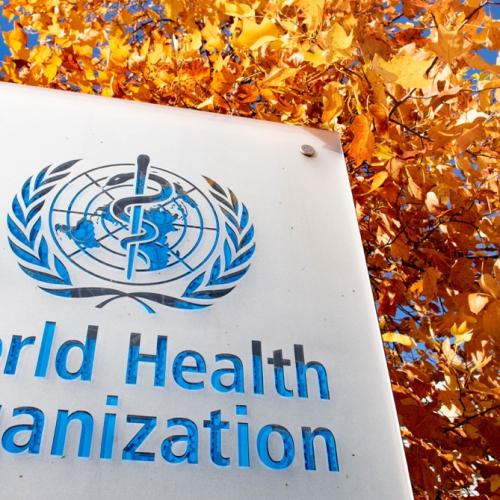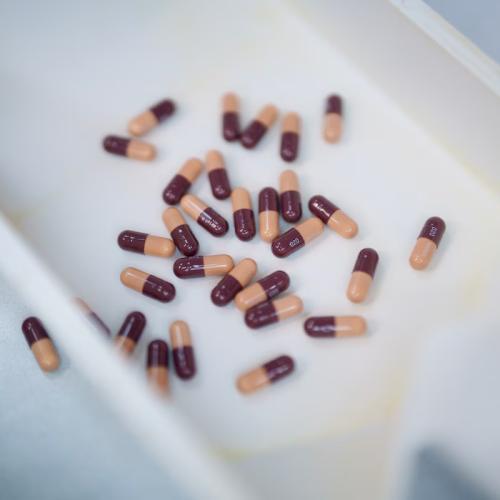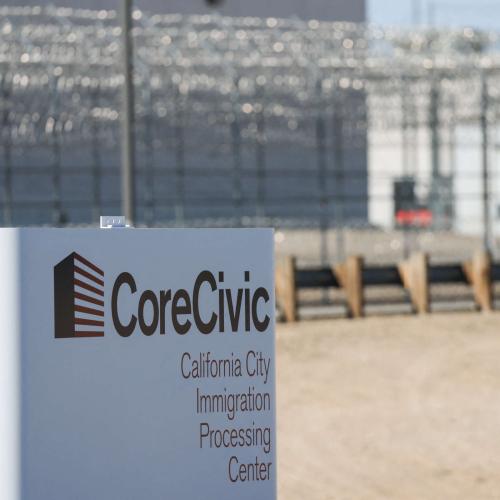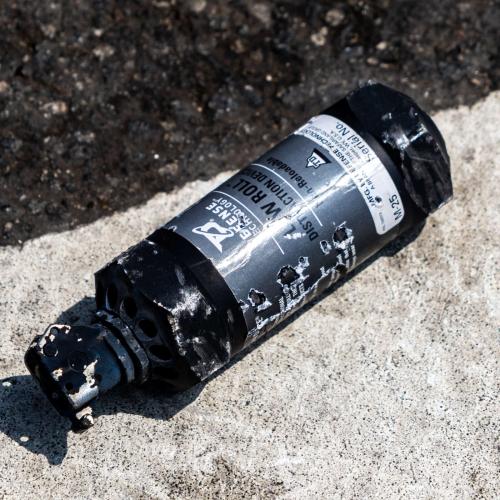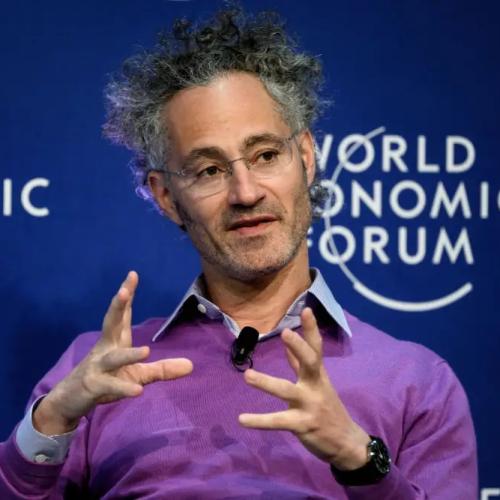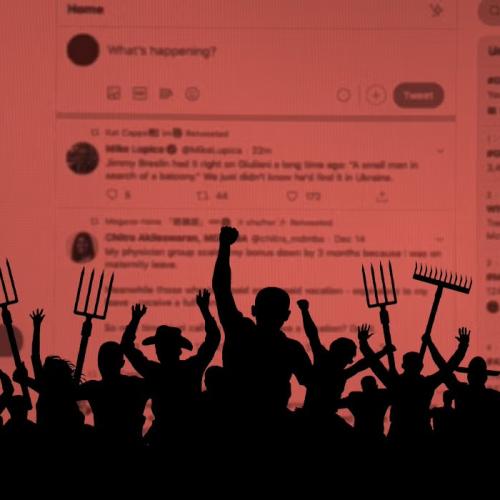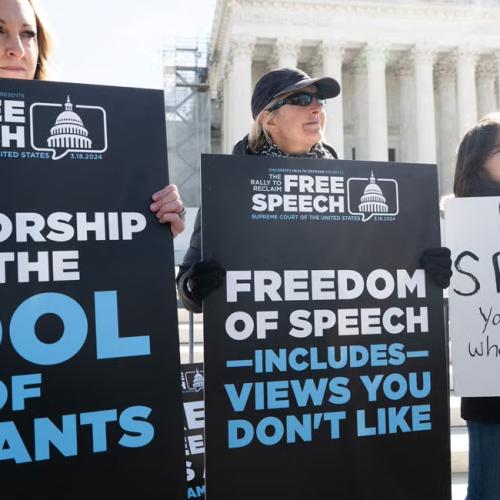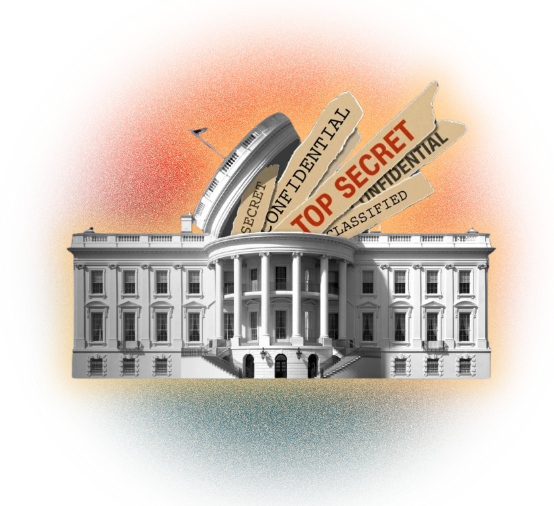Media Articles
Below are key excerpts of revealing news articles from reliable news media sources. If any link fails to function, a paywall blocks full access, or the article is no longer available, try these digital tools.
For further exploration, delve into our comprehensive Information Centers.
A declassified Cold War-era file from the CIA has gone viral over its coverage of a supposed clash between Soviet soldiers and a UFO. Following the collapse of the Soviet Union in 1991, the CIA acquired a 250-page KGB report recounting the events that transpired after a platoon fired at a flying saucer over Ukraine. The report included eyewitness accounts and pictures of the aftermath. The report claims Soviets conducting a training exercise in Ukraine spotted a “low-flying spaceship in the shape of a saucer” soaring above their heads. During the encounter, one of the Soviets fired a surface-to-air missile, which struck the UFO and sent it crashing to the ground. “It fell to Earth not far away, and five short humanoids with ‘large heads and large black eyes’ emerged from it,” the report claims. After escaping the debris of their ruined ship, the beings huddled together and “merged into a single object that acquired a spherical shape,” the surviving soldiers recalled. “In a few seconds, the spheres grew much bigger and exploded by flaring up with an extremely bright light. At that very instant, 23 soldiers who had watched the phenomenon turned into ... stone poles,” the report states. “Only two soldiers who stood in the shade and were less exposed to the luminous explosion survived,” it added. The KGB allegedly took custody of the “petrified soldiers” and the ruined spacecraft, which were transported to a secret base near Moscow.
Note: Explore our YouTube playlist of original UFO/UAP videos. For more along these lines, read our concise summaries of news articles on UFOs. Then explore the comprehensive resources provided in our UFO Information Center.
A pavilion of towering windows in a Mexico City urban park is nearly packed. Everyone here wants the same thing: to dance freely, at no cost, without harassment or prejudice. Twenty-somethings, children with their mothers, teenagers and elderly couples gather around the disc jockey’s console. “This is an open invitation for everyone to move as they wish in a safe space!” said Axel Martínez, one of the collective’s founders, as he grabs a microphone and cheers the revelers on. At their own pace, each person is carried away by the music — and no one seems surprised by the moves of others. From experimental jazz pieces and smooth Egyptian hip-hop to the more familiar pulse of cumbias grooved with an electronic touch, people dance to it all. The party was organized by the Nueva Red de Bailadores or NRB (New Network of Dancers), a collective that aims to create spaces where people can gather to dance freely. There’s no cover charge, no booze, and no pressure to do the “right” moves. As organizers pointed out, their parties forgo police and security, fostering a sense of collective care where attendees look out for one another. Isabel Miraflores, a 73-year-old retired high school assistant principal, came with her husband and said she enjoyed both the dancing and the presence of people of different ages. “I think it’s wonderful because it’s a free event,” she said. “We get together with people from all parts of society and we have fun without any trouble.”
Note: Explore more positive stories like this on the power of art and healing social division.
She has been at the bedside of over 1,000 people globally in their last moments of life—from her home in the U.S. to Thailand and Zimbabwe. O’Brien, a registered nurse, had an impulse to move into hospice care over two decades ago and has since worked as an oncology nurse and a death doula, supporting those at the end of life. O’Brien’s recent book, The Good Death, aims to normalize the realities of death and the need to plan for the end. At the end of life, many people share what they didn’t do but knew they always wanted to do, O’Brien says.“We all are here for a purpose, and we all have gifts, and when we don’t share them and act upon those, that’s where the huge regret comes,” O’Brien says. Not “dipping into the unknown” or trying something new is a factor of having an abundance mindset, she says. When we consider our time sacred and limited, we are less afraid to take action on something that may excite us. “One of the things we don’t know is how many days we have,” she says. “When you get that feeling, or you have something that you want to do, don’t let your ego, the fear part of you, shut it down.” Many people at the end of life regret not being vulnerable enough to let themselves be loved and give love. They often share that they could not reach a level of forgiveness with someone else or themselves, O’Brien says. It’s essential to extend ourselves grace, know when to take ownership, and release guilt, she says. O’Brien encourages patients to envision the time they’re struggling to let go of and ask themselves if they did what they could in the moment with the information and resources they had.
Note: Explore more positive human interest stories and meaningful lessons from near-death experiences.
Millions of people across the United States could be drinking water contaminated with dangerous levels of substances created when utilities disinfect water tainted with animal manure and other pollutants. An analysis of testing results from community water systems in 49 states found that nearly 6,000 such systems serving 122 million people recorded an unsafe level of chemicals known as trihalomethanes at least once during testing from 2019 to 2023. The chemicals are byproducts created when chlorine or other disinfectants used by water systems interact with organic matter, such as decaying leaves, vegetation, human or animal waste and other substances. One or more of these chemicals — chloroform, bromodichloromethane, dibromochloromethane, and bromoform — have been linked to various human health risks, including cancers. Texas water systems had the highest prevalence of water systems with unsafe levels of TTHMs, with more than 700 such systems serving over 8.6 million people reporting the contaminants above the EPA’s 80 ppb, according to the report issued April 10 by the Environmental Working Group (EWG). “Manure from factory farms is polluting our water supplies, and when utilities try to make that water safe to drink, they unintentionally create another public health hazard that increases the risk of cancer and birth defects,” Anne Schechinger, EWG’s Midwest director, said.
Note: For more along these lines, read our concise summaries of news articles on health and toxic chemicals.
On March 12th, Immigration and Customs Enforcement issued a press release about an “enhanced” operation that the agency had conducted the previous week in New Mexico. Forty-eight people were arrested in Santa Fe, Albuquerque, and Roswell. Twenty of them had been “arrested or convicted of serious criminal offenses,” which included homicide, sexual assault, drug trafficking, and shoplifting. Others had committed “immigration violations such as illegal entry and illegal re-entry,” and twenty-one had final orders of removal issued by an immigration judge. On March 16th, the New Mexico chapter of the American Civil Liberties Union filed a complaint with two oversight agencies within the Department of Homeland Security: the Office for Civil Rights and Civil Liberties and the Office of the Immigration Detention Ombudsman. “ICE has not identified any of the 48 individuals,” the letter said. “ICE has not indicated where any of them are being detained, whether they have access to counsel, in what conditions they are being held, or even which agency is holding them.” In the past two and a half months, ICE has ended a long-standing policy discouraging arrests at schools, places of worship, and hospitals; its officers have also allegedly entered residences without warrants, arrested U.S. citizens by mistake, and refused to identify themselves while whisking people away on the streets of American cities.
Note: For more along these lines, read our concise summaries of news articles on immigration enforcement corruption.
2,500 US service members from the 15th Marine Expeditionary Unit [tested] a leading AI tool the Pentagon has been funding. The generative AI tools they used were built by the defense-tech company Vannevar Labs, which in November was granted a production contract worth up to $99 million by the Pentagon’s startup-oriented Defense Innovation Unit. The company, founded in 2019 by veterans of the CIA and US intelligence community, joins the likes of Palantir, Anduril, and Scale AI as a major beneficiary of the US military’s embrace of artificial intelligence. In December, the Pentagon said it will spend $100 million in the next two years on pilots specifically for generative AI applications. In addition to Vannevar, it’s also turning to Microsoft and Palantir, which are working together on AI models that would make use of classified data. People outside the Pentagon are warning about the potential risks of this plan, including Heidy Khlaaf ... at the AI Now Institute. She says this rush to incorporate generative AI into military decision-making ignores more foundational flaws of the technology: “We’re already aware of how LLMs are highly inaccurate, especially in the context of safety-critical applications that require precision.” Khlaaf adds that even if humans are “double-checking” the work of AI, there's little reason to think they're capable of catching every mistake. “‘Human-in-the-loop’ is not always a meaningful mitigation,” she says.
Note: For more, read our concise summaries of news articles on warfare technology and Big Tech.
In Cape Cod, Massachusetts ... hidden away from the picturesque beaches was the town landfill, including lagoons of toxic waste from septic tanks, which was being left to seep into the groundwater below. So [John] Todd, then a 45-year-old biologist, decided to design a solution. Next to the lagoons, he assembled a line of 15 clear-sided fiberglass tanks, each about the height of a person, and filled them with water containing all the different life forms he could find from local ponds, marshes and streams – plants, bugs, bacteria, fungi, general gunk. The water could be pumped from one tank to the next, and the living matter inside them soon organised itself into a series of different ecosystems. Todd found that he could put in polluted water from the lagoons at one end of the line of tanks and by the time it came out the other end, 10 days later, it was clean enough to drink. “To see that water, and to see all the organisms in the tanks, including fishes, looking and being so healthy, I was just amazed,” he says. Todd ... would later discover that various microorganisms were finding uses for the toxins and heavy metals. Todd calls it “biological intelligence”. Todd christened his invention the “eco-machine”, and spent the next four decades ... applying it to everything from treating wastewater to growing food to repairing damaged ecosystems. Todd founded his own ecological consultancy, Ocean Arks International. It has designed and built more than 100 eco-machine systems to treat problems of pollution, wastewater and food production around the world, from the US to China, Australia, Brazil and Scotland. Todd’s eco-machines are cheaper and more effective than industrial alternatives ... and are even capable of treating chemicals that have been impossible to break down using conventional methods, such as grades of crude oil and mining waste. They are also far more sustainable – powered almost entirely by sunlight.
Note: Explore more positive stories like this on healing the Earth.
Since the Israel-Hamas war, relationships between some students have been nowhere near brotherly, let alone collegial. Some students just aren’t accustomed to contrary or controversial ideas and believe that even hearing them is harmful. What hasn’t made headline news is the spike in civil discourse initiatives at campuses. Here’s one gauge. At the Institute for Citizens & Scholars, a coalition of College Presidents for Civic Preparedness went from a handful of participants prior to Oct. 7, 2023, to well over 100 afterward. The likes of Harvard, Yale, the Massachusetts Institute of Technology, and the University of Michigan in Ann Arbor have launched civil discourse initiatives since the deadly Hamas attack that sparked the Israeli invasion of Gaza. One success story is the Dialogue, Inclusion, and Democracy (DID) Lab at Providence College in Rhode Island, run by Dr. Bevely and Professor Nick Longo. “With Mutual Respect” events feature two people on opposing sides of an issue. Panelists don’t so much debate as endeavor to foster mutual understanding. In December 2020, Vanderbilt [University's] women’s basketball team elected to protest for racial justice by staying inside the locker room during the national anthem. Vanderbilt ... facilitated structured dialogue between the basketball players and military veterans on the Nashville, Tennessee, campus. Some athletes shared experiences of racism and discrimination. Young men and women, some of whom had combat experience, explained why they felt so strongly about serving their country. The culture of civil discourse needs to be rooted in a relationship of trust. “If as a student, I’m challenging something, or I say something controversial, I’m going to have to trust you that you’re not excluding me,” says [Chancellor] Dr. Diermeier.
Note: Explore more positive stories like this on healing social division and reimagining education.
Perhaps you’re in hospital recovering from surgery, as I was only a little time ago. When a friend arrived with a posy of flowers, I found myself smiling for the first time since leaving home. More than ever, we could all use some green relief, as we deal with a world that seems to only grow more anxiety-inducing and uncertain. In most cultures throughout history, medicine and botany have been closely entwined, and gardens have been associated with healing the body, mind, and spirit. Inevitably, the creep of urbanisation saw the garden landscapes of [healing] institutions greatly reduced. There has been a trend towards banning flowers from hospital wards. Reasons include a suspicion bacteria lurk in the flower water, as well as ... patients or nursing staff knocking over vases during night shifts. An explanation for the uplifting effect of those flowers in my hospital room may be found in numerous studies that have shown, post-surgery, patients in rooms with plants and flowers have shorter recovery times, require fewer analgesics, and experience lower levels of anxiety. Partly, it is a response to beauty. Our compulsion to turn towards the natural world is known as “biophilia”. [German–American social psychologist and psychoanalyst, Erich Fromm] ... described it as “the passionate love of life and all that is alive”, speculating that our separation from nature brings about a level of unrecognised distress. Doctors in some countries are writing green prescriptions, rather than scripts for medication. And not just for mental health problems, but for physical conditions such as high blood pressure.
Note: Explore more positive stories like this on healing our bodies.
Meta whistleblower Sarah Wynn-Williams, the former director of Global Public Policy for Facebook and author of the recently released tell-all book “Careless People,” told U.S. senators ... that Meta actively targeted teens with advertisements based on their emotional state. In response to a question from Sen. Marsha Blackburn (R-TN), Wynn-Williams admitted that Meta (which was then known as Facebook) had targeted 13- to 17-year-olds with ads when they were feeling down or depressed. “It could identify when they were feeling worthless or helpless or like a failure, and [Meta] would take that information and share it with advertisers,” Wynn-Williams told the senators on the subcommittee for crime and terrorism. “Advertisers understand that when people don’t feel good about themselves, it’s often a good time to pitch a product — people are more likely to buy something.” She said the company was letting advertisers know when the teens were depressed so they could be served an ad at the best time. As an example, she suggested that if a teen girl deleted a selfie, advertisers might see that as a good time to sell her a beauty product as she may not be feeling great about her appearance. They also targeted teens with ads for weight loss when young girls had concerns around body confidence. If Meta was willing to target teens based on their emotional states, it stands to reason they’d do the same to adults. One document displayed during the hearing showed an example of just that.
Note: Facebook hid its own internal research for years showing that Instagram worsened body image issues, revealing that 13% of British teenage girls reported more frequent suicidal thoughts after using the app. For more along these lines, read our concise summaries of news articles on Big Tech and mental health.
Outer space is no longer just for global superpowers and large multinational corporations. Developing countries, start-ups, universities, and even high schools can now gain access to space. In 2024, a record 2,849 objects were launched into space. The commercial satellite industry saw global revenue rise to $285 billion in 2023, driven largely by the growth of SpaceX’s Starlink constellation. While the democratization of space is a positive development, it has introduced ... an ethical quandary that I call the “double dual-use dilemma.” The double dual-use dilemma refers to how private space companies themselves—not just their technologies—can become militarized and integrated into national security while operating commercially. Space companies fluidly shift between civilian and military roles. Their expertise in launch systems, satellites, and surveillance infrastructure allows them to serve both markets, often without clear regulatory oversight. Companies like Walchandnagar Industries in India, SpaceX in the United States, and the private Chinese firms that operate under a national strategy of the Chinese Communist Party called Military-Civil Fusion exemplify this trend, maintaining commercial identities while actively supporting defense programs. This blurring of roles, including the possibility that private space companies may develop their own weapons, raises concerns over unchecked militarization and calls for stronger oversight.
Note: For more along these lines, read our concise summaries of news articles on corruption in the military and in the corporate world.
A recent study conducted by the Cleveland Clinic has revealed that this year's flu shot was not effective in preventing influenza among working-aged adults. The study, which was published on Medrxiv.org, analyzed data from the 2024-2025 respiratory viral season. According to the findings, "influenza vaccination of working-aged adults was associated with a higher risk of influenza," indicating that the vaccine did not provide the expected protection this season. The report further detailed that "the cumulative incidence of influenza was similar for the vaccinated and unvaccinated states early, but over the course of the study the cumulative incidence of influenza increased more rapidly among the vaccinated than the unvaccinated." To be more specific, the study also found that the vaccine effectiveness was as low as -26.9%, indicating that the vaccine had actually increased the risk of developing influenza. This is a concerning finding, especially considering the fact that the flu vaccine is widely administered every year to prevent the spread of the disease.
Note: For more along these lines, read our concise summaries of news articles on health and vaccine controversies.
In their peer-reviewed book, In Covid’s Wake: How Our Politics Failed Us, [left-leaning political scientists] Stephen Macedo and Frances Lee argue that public health authorities, the mainstream media, and progressive elites often pushed pandemic measures without weighing their costs and benefits, and ostracized people who expressed good-faith disagreement. The book grew out of research Macedo was doing on the ways progressive discourse gets handicapped by a refusal to engage with conservative or outside arguments. “Covid is an amazing case study in groupthink and the effects of partisan bias,” he said. At times, scientific and health authorities acted less like neutral experts and more like self-interested actors, engaging in PR efforts to downplay uncertainty, missteps or conflicts of interest. Reports by Johns Hopkins (2019), the World Health Organization (2019), the state of Illinois (2014) and the British government (2011) had all expressed ambivalence or caution about the kind of quarantine measures that were soon taken. The Johns Hopkins Center for Health Security hosted a wargaming exercise in October 2019, shortly before the pandemic began, to simulate a deadly coronavirus pandemic; the findings explicitly urged that “[t]ravel and trade … be maintained even in the face of a pandemic.” A WHO paper in 2019 said that some measures – such as border closures and contact tracing – were “not recommended in any circumstances”. “In inflation-adjusted terms,” Macedo and Lee write, “the United States spent more on pandemic aid in 2020 than it spent on the 2009 stimulus package and the New Deal combined." The economic strain on poor and minority Americans was particularly severe. Teachers’ unions ... painted school re-openings as “rooted in sexism, racism, and misogyny” ... despite the fact that minority and poor students were most disadvantaged by remote learning.
Note: Pandemic policies led to one of the greatest wealth transfers in history. For more along these lines, read our concise summaries of news articles on COVID corruption and media manipulation.
Ever thought of having your genome sequenced? 23andMe ... describes itself as a “genetics-led consumer healthcare and biotechnology company empowering a healthier future”. Its share price had fallen precipitately following a data breach in October 2023 that harvested the profile and ethnicity data of 6.9 million users – including name, profile photo, birth year, location, family surnames, grandparents’ birthplaces, ethnicity estimates and mitochondrial DNA. So on 24 March it filed for so-called Chapter 11 proceedings in a US bankruptcy court. At which point the proverbial ordure hit the fan because the bankruptcy proceedings involve 23andMe seeking authorisation from the court to commence “a process to sell substantially all of its assets”. And those assets are ... the genetic data of the company’s 15 million users. These assets are very attractive to many potential purchasers. The really important thing is that genetic data is permanent, unique and immutable. If your credit card is hacked, you can always get a new replacement. But you can’t get a new genome. When 23andMe’s data assets come up for sale the queue of likely buyers is going to be long, with health insurance and pharmaceutical giants at the front, followed by hedge-funds, private equity vultures and advertisers, with marketers bringing up the rear. Since these outfits are not charitable ventures, it’s a racing certainty that they have plans for exploiting those data assets.
Note: Watch our new video on the risks and promises of emerging technologies. For more along these lines, read our concise summaries of news articles on Big Tech and the disappearance of privacy.
Starting this week, I once again have the privilege of teaching law students about the First Amendment. I am in the United States on a green card, and recent events suggest that I should be careful in what I say—perhaps even about free speech. The Trump administration is working to deport immigrants, including green-card holders, for what appears to be nothing more than the expression of political views with which the government disagrees. These actions ... make it difficult to work out how to teach cases that boldly proclaim this country is committed to a vision of free speech that, right now, feels very far away. In recent weeks, the Trump administration has been—is there any other way to describe it?—rounding up dissidents. To more easily chase down people with ideas it dislikes, the government is asking universities for the names and nationalities of people who took part in largely peaceful protests and engaged in protected speech. Exactly what kind of expression gets you in trouble is not clear—no doubt that’s partly the point. [Deputy Secretary of Homeland Security Troy] Edgar repeatedly refused to answer [NPR journalist Michel] Martin’s simple question: “Is any criticism of the United States government a deportable offense?” A 2010 Supreme Court decision upheld a law banning certain forms of speech that are classified as “material support” to foreign terrorist groups—in that case, the speech included training designated groups on how to pursue their aims peacefully. But even in that case, which upheld a stunningly broad speech restriction, the Court also insisted that ... advocacy of unlawful action is protected so long as it is not done in coordination with terrorist groups. This ... rests “at the heart of the First Amendment”: “viewpoint discrimination is uniquely harmful to a free and democratic society.”
Note: For more along these lines, read our concise summaries of news articles on censorship and immigration enforcement corruption.
New chat logs released by the House Judiciary Committee this week show the extraordinary lengths the FBI went to behind the scenes to shut down any discussion of Hunter Biden’s laptop in October 2020 after the New York Post broke the story. The conversations, withheld by the FBI under Director Chris Wray, show that senior leadership issued an internal “gag order” on the laptop. The FBI had been in possession of the abandoned MacBook Pro for 10 months by that stage, after computer repair shop owner John Paul Mac Isaac handed it over. The FBI’s forensic analysts quickly determined the laptop belonged to Hunter, had not been tampered with or altered in any way, and was suitable to be used in court. Yet the chat logs show that senior FBI officials instructed agents to say “No comment” when asked about the laptop during regular meetings with social media companies before the 2020 election. The FBI had spent weeks warning Facebook and Twitter about election interference in the form of Russian disinformation and had told Twitter to be on guard for a “hack and leak” operation “likely” involving Hunter Biden. In other words, the FBI “prebunked” The Post’s story so that the social media companies immediately censored it. The FBI knew The Post had received a hard-drive copy of the laptop from Donald Trump’s lawyer Rudy Giuliani because it had a covert surveillance warrant on the former mayor’s iCloud.
Note: It took more than a year for New York Times and Washington Post to finally admit that the laptop was genuine. For more along these lines, read our concise summaries of news articles on censorship and intelligence agency corruption.
In 2020, Dr. Jay Bhattacharya was condemned as a quack and considered a pariah by the medical field for co-authoring a public declaration questioning the efficacy of Covid lockdowns. In an October 2020 email to Dr. Anthony Fauci that was later leaked online, [former director of the National Institutes of Health Francis] Collins called Bhattacharya a “fringe epidemiologist,” and urged a “quick and devastating published takedown” of his declaration. Bhattacharya is now the new director of the NIH. He [said] Collins has since apologized for his comments—but only in private. Bhattacharya said of Collins: “I’ve been praying for him ever since I found out that he’d written that email. Reconciliation is really possible. Even if people disagree with each other fundamentally, even hate each other—and I’d never hated him and never will.” Bhattacharya “wants to extend [Fauci] the same grace that I want to extend to everybody. I think he was deeply wrong in his scientific ideas in 2020, but I believe ... he was trying to do what he viewed as the best for the American people.” President Biden preemptively pardoned Fauci for his extreme Covid response measures. The first step to rebuilding trust, Bhattacharya argues, is transparency. A database on doctors’ relationships with Big Pharma already exists, thanks to the 2010 Physician Payments Sunshine Act, which allows anyone to search for and view all pharmaceutical money doctors have received since 2013. Producing a similar website that shows where scientists get their research funding, and the results of their research, “would be a really productive way to reestablish trust ... “The work of the NIH in particular affects basically every single aspect of biomedical research. And of course, there are pecuniary interests involved. People make money off of the results of the research.”
Note: Bhattacharya's tone of reconciliation after being smeared in the media sets a powerful example. He recently received the top intellectual freedom award from the prestigious American Academy of Sciences and Letters. Top leaders in the field of medicine and science have spoken out about the rampant corruption and conflicts of interest in those industries. For more, read our concise summaries of news articles on science corruption.
Oregon has for years struggled with a drug crisis, reporting one of the highest rates of substance use disorders in the US and ranking last in the nation for access to treatment. The problem is systemic, rooted in decades of failure to invest in the level of behavioral health services needed for people with mental illnesses and addiction. The Pacific north-west state’s significant affordable housing shortage has compounded the challenges, as people languish on the streets without care. On 12 November 2024, Cameron Washam, 45, was lying on the street by Portland’s Union Station, on the brink of death. He and his wife, Christina Bell, 47, had long struggled with homelessness and addiction. Workers from a Portland street outreach initiative coordinated by the Mental Health and Addiction Association of Oregon (MHAAO), a non-profit dedicated to peer recovery services, approached and offered help, saying they could immediately take them to a detox program. They entered detox, Washam got emergency surgery for his infection, and after eight days, they were placed in an outpatient program, then a sober recovery home. The outreach effort [is] called the Provider-Police Joint Connection Program. Since its launch, the program has connected 1,005 people to services, including 651 who received access to programs on the same day outreach teams met them and 159 who got into detox and treatment.
Note: Explore more positive stories on healing our bodies and repairing criminal justice.
After deporting 238 Venezuelan immigrants to a notorious mega-prison in El Salvador—likely in violation of court orders—the Trump administration has triggered an unprecedented showdown with the judicial branch to defend its ability to deport immigrants without presenting any evidence in court. This deportation effort constitutes a clear assault on civil liberties and due process rights. It also represents an arguably darker milestone: The US government is now in the business of trafficking migrants on the global market. On March 15, the Trump administration struck a $6 million agreement with Salvadoran President Nayib Bukele in which the government traded 238 people to be warehoused for a year in the Centro de Confinamiento del Terrorismo—CECOT—the “crown jewel” of Bukele’s deeply antidemocratic domestic security platform. Even after conceding that they illegally deported one Maryland father who had already been granted protected status by an immigration judge, the Trump administration has said it cannot bring him home because he is now in foreign custody—meaning the executive branch is prioritizing its trade relationship with El Salvador over compliance with American law. [The Prisoners] will soon be enlisted in El Salvador’s euphemistic “Zero Idleness” program, an obscure labor regime. There’s a familiar word for forced prison labor: slavery. By effectively subsidizing and populating a modern penal colony, Trump has reignited the international slave trade.
Note: Allegations that the US government is facilitating human trafficking under the guise of immigration enforcement are not new. Health and Human Services (HHS) whistleblower Tara Lee Rodas testified that "the US government has become the middleman in a large scale, multibillion-dollar child trafficking operation that is run by bad actors seeking to profit off of the lives of children.” Watch our Mindful News Brief video on how the US government facilitates child trafficking at the border.
On July 2022, Morgan-Rose Hart, an aspiring vet with a passion for wildlife, died after she was found unresponsive at a mental health unit in Essex. Her death was one of four involving a hi-tech patient monitoring system called Oxevision which has been rolled out in nearly half of mental health trusts across England. Oxevision’s system can measure a patient’s pulse rate and breathing without the need for a person to enter the room, or disturb a patient at night, as well as momentarily relaying CCTV footage when required. Oxehealth, the company behind Oxevision, has agreements with 25 NHS mental health trusts, according to its latest accounts, which reported revenues of about £4.7m in ... 2023. But it is claimed in some cases staff rely too heavily on the infra-red camera system to monitor vulnerable patients, instead of making physical checks. There are also concerns that the system – which can glow red from the corner of the room – may worsen the distress of patients in a mental health crisis who may have heightened sensitivity to surveillance or control. Sophina, who has experience of being monitored by Oxevision while a patient ... said: “I think it was something about the camera and it always being on, and it’s right above your bed. “It’s the first thing you see when you open your eyes, the last thing when you go to sleep. I was just in a constant state of hypervigilance. I was completely traumatised. I still felt too scared to sleep properly.”
Note: For more along these lines, read our concise summaries of news articles on Big Tech and mental health.
Important Note: Explore our full index to key excerpts of revealing major media news articles on several dozen engaging topics. And don't miss amazing excerpts from 20 of the most revealing news articles ever published.














